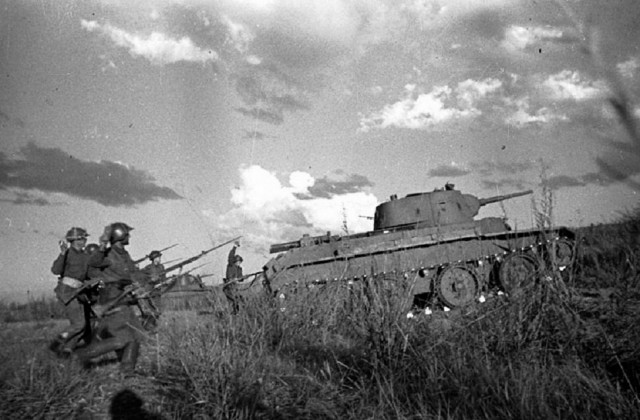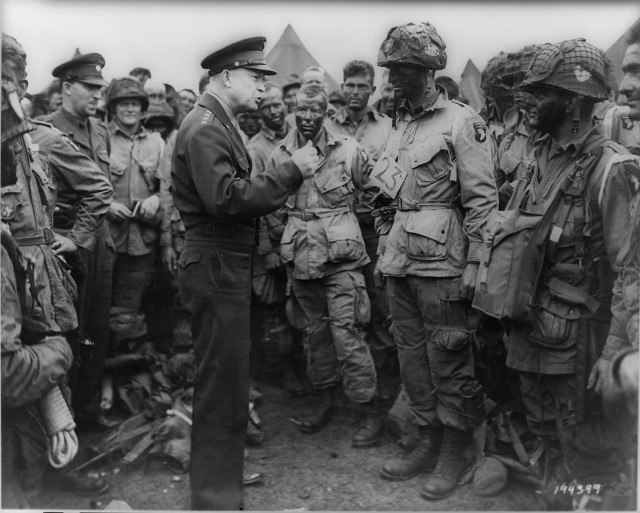Many men have the honor of saying they fought for their country in the global struggle known as WWII. However, not many men have the misfortune of being forcibly called to fight for three separate nations taking him from the Axis in the Pacific theater to the Allies on the Eastern front, and then back to the Axis just in time for D-Day.
It is a story that is almost too inexplicable to be true, but it is precisely what happened to Yang Kyoungjong. As a Korean living in Manchuria when the Japanese ruled Korea and were expanding their empire, they needed fresh troops for a series of border conflicts with the Soviet Union.
When conscripted at the age of 18 in 1938, he began a journey that included internment in the POW camps of three separate nations and fighting on behalf of both the Axis and the Allies.
A Short War for the Japanese
After his conscription, he fought in the Battle of Khalkhin Gol in 1939 which pitted Japanese forces and State of Manchurian troops of which Yang was a part, against the Soviet Union and Mongolian People’s Republic. The battle was part of a series of border conflicts that took place between the powers between 1935 and 1939 with the Soviet Union and Japan pulling the strings of each of their respective puppet states.
The result was a Soviet and Mongolian victory where a ceasefire agreement was signed with little changed. However, the ceasefire came too late for Korean Yang Kyoungjong who was captured and sent to a Soviet labor camp.

As a prisoner in the camp, Yang inevitably suffered brutal conditions and an intense workload for which it was common for many not to survive. While exact records are hard to verify it is estimated that over 1 million prisoners died in the system with many believing the number to be substantially higher.
However, Yang was one of those who survived although his path out of the labor camp brought its own unique set of risks.
In 1942 as the Soviets faced the German onslaught, they were in need of men to fight on the Eastern Front. Against his will, Yang was pressed into service with the Soviet army and shipped to the front.
It remains to be seen which was the deadlier proposition – going from the Gulags to the Eastern Front, but Yang did not have much say in the matter. At the front, he was again on the losing side in the major Battle of Kharkov in early 1943. He was captured by the Germans and on his way to yet another POW camp.
On the Road to D-Day
After his brief stint of fighting for the Allies, Yang was back with the Axis. Again against his will, he was pressed into service for Germany as part of its Eastern Battalions. It was a conscription effort by the Germans to raise much-needed fighting men from their captured Eastern territories. Perhaps they thought Yang fought for the right side once, so why not give him another crack at it. He was “volunteered” for duty.
The Eastern Battalions were hardly the elite of the German forces as most were pressed into service and while many fought admirably, most surrendered at the first sign of conflict. In late 1943, Yang and the unreliable conscription troops were sent to Normandy because it was thought unlikely the Allies would pick that location for a massive invasion.

June 6, 1944, Yang looked up into the skies above Normandy and watched thousands of Allied paratroopers descend to the ground. They had been sent in advance of the main invasion force to attack the men opposing it, but for Yang, he perhaps saw it as his ride home.
How much of a fight this Korean from Japanese-occupied Manchuria put up is unknown, but he quickly found himself in his third and final Prisoner of War camp after fighting on behalf of a third country in this very long and to him very likely confusing war.
The Long and Winding Road
Upon his capture by paratroopers on D-Day, he was believed at first to be a Japanese in a German uniform, but upon further examination, his long ordeal was unveiled. People might think that a soldier who gets captured three separate times by three different nations is not a very good soldier. However, if we are honest with ourselves, this man hardly had any reason to fight in an attempt to win each nation’s highest military honor.
Yang was conscripted by a country other than his own at age 18 in what would be a pattern that would last until 1944 and take him from his homeland in Asia all the way to Normandy.
Luckily for Yang, the Americans were not in need of extra manpower, and he was finally able to sit out a war that had begun so long ago for him halfway across the world. How he survived and the stories he could tell might perhaps be lost to time as Yang Kyoungjong passed away as a resident of the State of Illinois in 1992.
He was without a doubt, one of the luckiest and perhaps simultaneously unluckiest men of the entire war. We can only hope he enjoyed his life in America as he certainly seemed to deserve it.
This indeed is one of the more remarkable stories of war that we can be thankful was not entirely lost to the passage of time.
